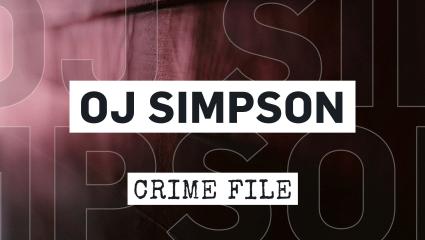The Trial
On 23 January 1995, OJ Simpson finally went on trial on two counts of murder. He pleaded not guilty to both counts and soon assembled the ‘Dream Team’; his group of highly paid and ruthless lawyers that included legendary civil defence advocates like Alan Dershowitz, F Lee Bailey, Robert Kardashian, Johnnie Cochran, Robert Shapiro and specialist DNA evidence lawyers Barry Scheck and Peter Neufeld. Their first task was to filibuster the jury selection and ensure a favourable jury. The lawyers, Cochran in particular, decided from very early on that ethnicity and race would be a major factor in ensuring Simpson was not found guilty, and they got their favourable jury. The final composition was eight black females, two white females, one black male and one Hispanic male. The defence believed that black females would be more likely to be sympathetic to Simpson.
On the other side of the courtroom were District Attorney and lead prosecutor Marcia Clark, and Christopher Darden, Assistant District Attorney. Clark had a reputation as a tough, determined and hard litigator, born out of her traumatic life (she was raped as a teenager while travelling in Europe and was a survivor of two abusive marriages) and her time in Special Trials Unit. Sitting in the chair was Judge Lance Ito, a Japanese-American whose parents had been interned during the Second World War. His appointment was seen as a wise political choice, particularly because of his race.
The prosecution’s case was simple; Simpson had an abusive relationship with Brown while they were together; he was jealous of her and her relationship with Goldman after they divorced; he had no alibi for the timeframe of the murders. He had left his footprints, his cap with his hairs attached to it and at least eight separate drops of his blood at Brown’s condominium. At his home, he had dropped a glove that matched the one he left near the bodies and this one contained Goldman's blood. In his bedroom, his socks were splattered with Nicole's blood. In his Ford Bronco, there were samples of both Nicole's and Goldman's blood.
The defence’s case was simple. Simpson was completely innocent; the crime of which he had been accused was a fabrication, framed by malicious police officers and incompetent lab technicians. Simpson was yet another black victim of the white judicial system, on trial because he was black. The 1991 beating of Rodney King, the trial and acquittal of the white police officers, and the subsequent riots were still fresh in everyone’s minds.
Thus, the second thing the defence did was to call into question the motives and personal convictions of the police officers involved, specifically Detective Mark Fuhrman, alleging that he held racist views and patterns of behaviour; Cochran even compared him to Adolf Hitler. They also alleged that he had planted the glove on Simpson’s property. They then challenged the legitimacy of the original search warrant; Judge Ito, although criticising the way the search warrant had been sought and compiled, upheld the warrant and admitted the challenged evidence.
Thirdly, the defence sought to ambush the prosecution by springing surprise witnesses on them. Under the rules of California's reciprocal discovery law, both prosecution and defence were bound to disclose all information relating to witnesses they intended to call. The defence ignored this, and Judge Ito was deaf to the pleas of the prosecution, who had to endure 26 unexpected unannounced witnesses.
Fourthly, the defence picked apart the physical evidence that the prosecution had amassed, including so-called ‘procedural deficiencies’ that introduced elements of doubt over the reliability of the evidence. For example, the blood sample that Simpson gave on his visit to the police after his return to Chicago had been carried around by the police for several hours rather than being taken immediately to a police lab. As a result, some of the samples was missing, ostensibly used to contaminate the crime scene and frame Simpson.
Finally, the defence sought to discredit the prosecution’s DNA evidence and their main attack came from Scheck and Neufeld. They were two very experienced civil rights lawyers and scientists, both were also founders of the pro-bono Innocence Project that uses DNA testing to help free people who were wrongfully convicted. They first accused the forensic team of malice in altering evidence, then they levelled the charge that the team was incompetent. One of their main thrusts was that the collection of blood samples was sloppy and was carried out by an unsupervised junior member of the team.
The esoteric technicalities of DNA collection and testing were beyond most of the laymen on the jury, and both Scheck and Neufeld took advantage of this fact. Even though experts for the prosecution insisted that the odds that the blood found near the bodies could have come from anyone other than Simpson were one in 170 million, Scheck and Neufeld laid out a series of complex hypothetical questions that confused even the experts, let alone the jury. The bottom line was that doubt was cast on the integrity of the DNA evidence and the prosecution experts lost the jury in the maze of science.
The final straw was when the prosecution asked Simpson to try on the glove. It did not fit and although the prosecution tried to argue that the glove had shrunk from being soaked in blood, frozen and unfrozen, and extensively tested, the damage had been done. On 3 October 1995, a verdict of ‘Not Guilty’ was returned by the jury.



